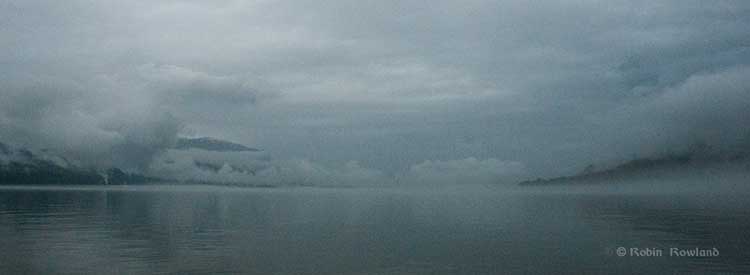
If there is a major disconnect between the people who live in the Kitimat region and the rest of Canada, it is the question of vessel traffic on the Douglas Channel, with Enbridge spinning that there is already major tanker traffic on the Channel.
This section from the Northern Gateway website, is often quoted by Enbridge supporters, the vast majority of whom live in Alberta, thousands of kilometres away, have never been to Kitimat, but, somehow from Calgary or Fort McMurray, claim to know more about the Douglas Channel than people who live in Kitimat, including those who have sailed Douglas Channel for decades.
On its website Northern Gateway claims
According to numbers from the Port of Kitimat, not only have vessels carrying industrial products been travelling the channels safely for some 35 years, but so too have ships carrying petroleum products—like the one featured arriving in the Port of Kitimat through the Douglas Channel in the picture above.
In fact, some 1,560 vessels carrying methanol and condensate called on Kitimat port from 1982 to 2009 – that’s over 3,100 transits of vessels dedicated to the transport of petroleum products.
When you add vessel traffic of all industrial activity into Kitimat port, the number jumps to 6,112.
To be clear…the number of ships servicing industry arriving at Kitimat port between 1978 and 2009 is 6,112. That’s 12,224 transits!
So in its questions to the Haisla, Enbridge asked:
c) Please confirm that the Haisla Nation is aware of existing and proposed
marine vessel activity within its Traditional Territory, including:(i) fuel barges
(ii) cargo/container ships
(iii) commercial fishing vessels
(iv) condensate tankers
(v) liquefied natural gas tankers
Enbridge’s question was an obvious attempt to enhance their spin on vessel traffic on the Douglas Channel, by fishing for an admission that large vessels already ply the Channel, something the residents of the Kitimat, both First Nations and non-aboriginal already know well.
In its response, the Haisla Nation replies:
The Haisla Nation is aware of the existing and proposed marine vessel activity within its Territory, including fuel barges, cargo/container ships, commercial fishing vessels, condensate tankers, and liquefied natural gas tankers.
The Haisla Nation is also aware of the increased cumulative effect of additional marine vessel activity as projects are approved. The presence of this shipping increases the significance of the potential impacts of the project on Haisla Nation aboriginal title and rights, through cumulative impacts.
The Haisla Nation is responsible for some of the vessel traffic within its Territory, with modern forms of transportation having replaced canoes. Until legal developments in the early 2000s which have defined the content of the honour of the Crown with respect resource decisions and potential impacts on First Nations, the Haisla Nation had little say about the projects with associated vessel traffic in its Territory.
While standard petroleum product tankers, many carrying condensate, a natural gas product, have been visiting Kitimat for years, there have. so far, been no supertankers, much less Very Large Crude Carriers. No bitumen carrying tankers have visited Kitimat, a fact always ignored by the region’s critics in Alberta and by Enbridge on its website.
Not only the filing by the Haisla Nation but most of the testimony at the recent public comment hearings in at Kitamaat Village, were about the fear of the growing cumulative effect of greatly increased tanker traffic on the Channel.